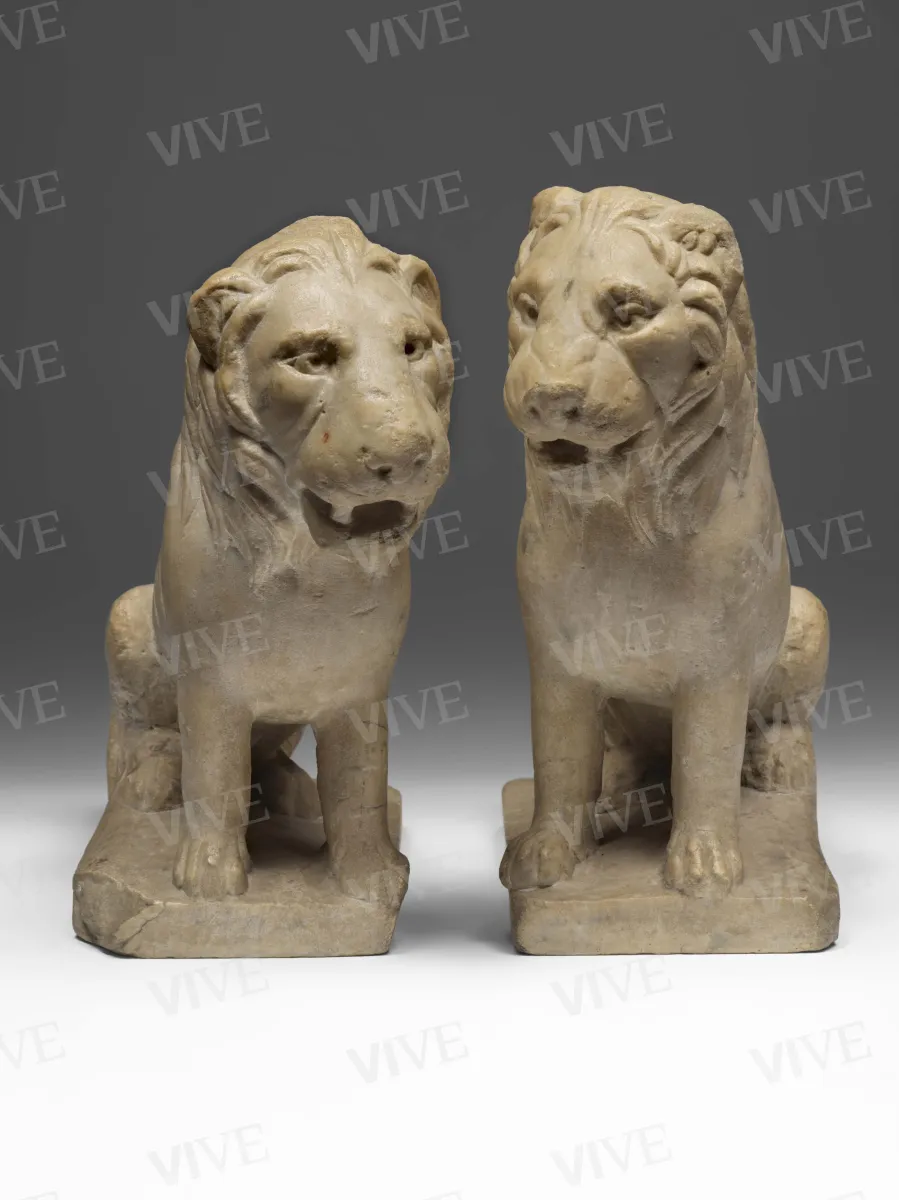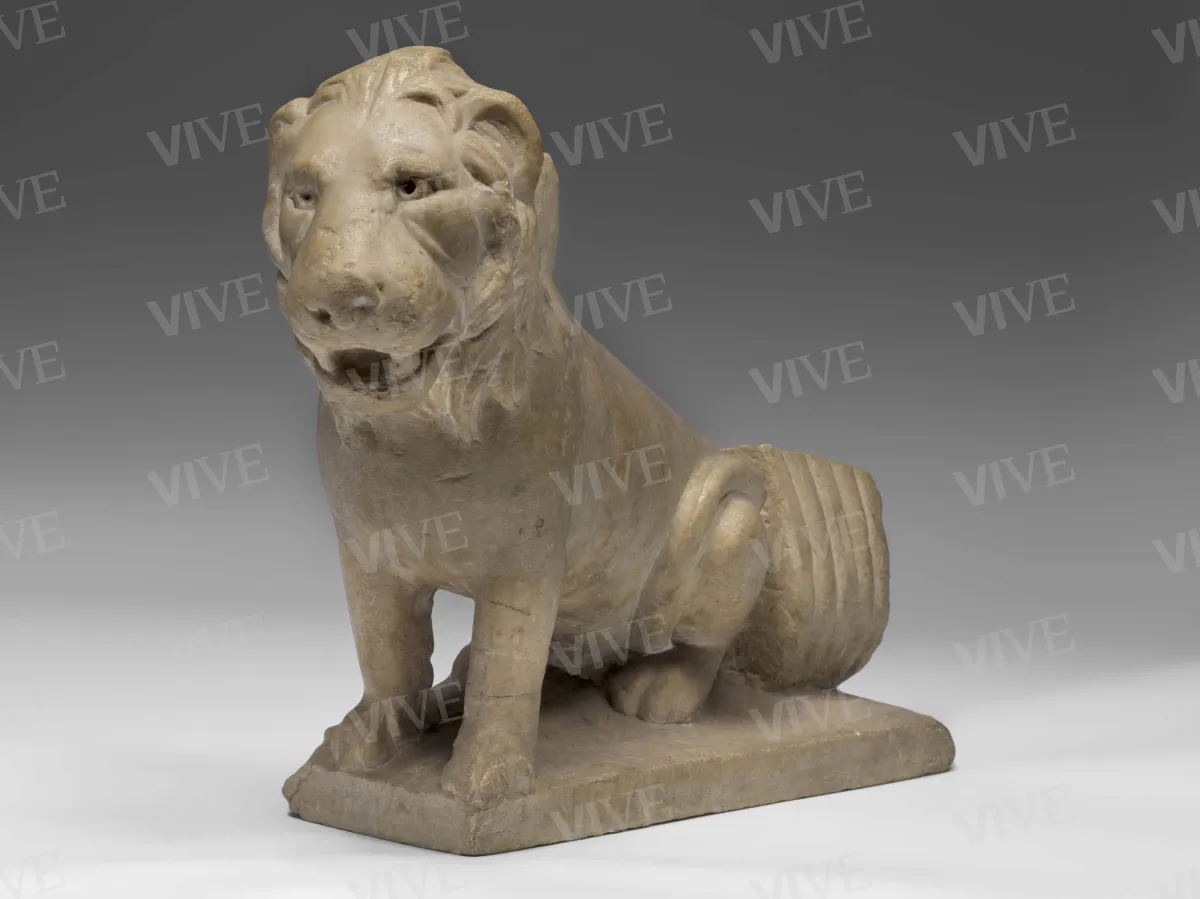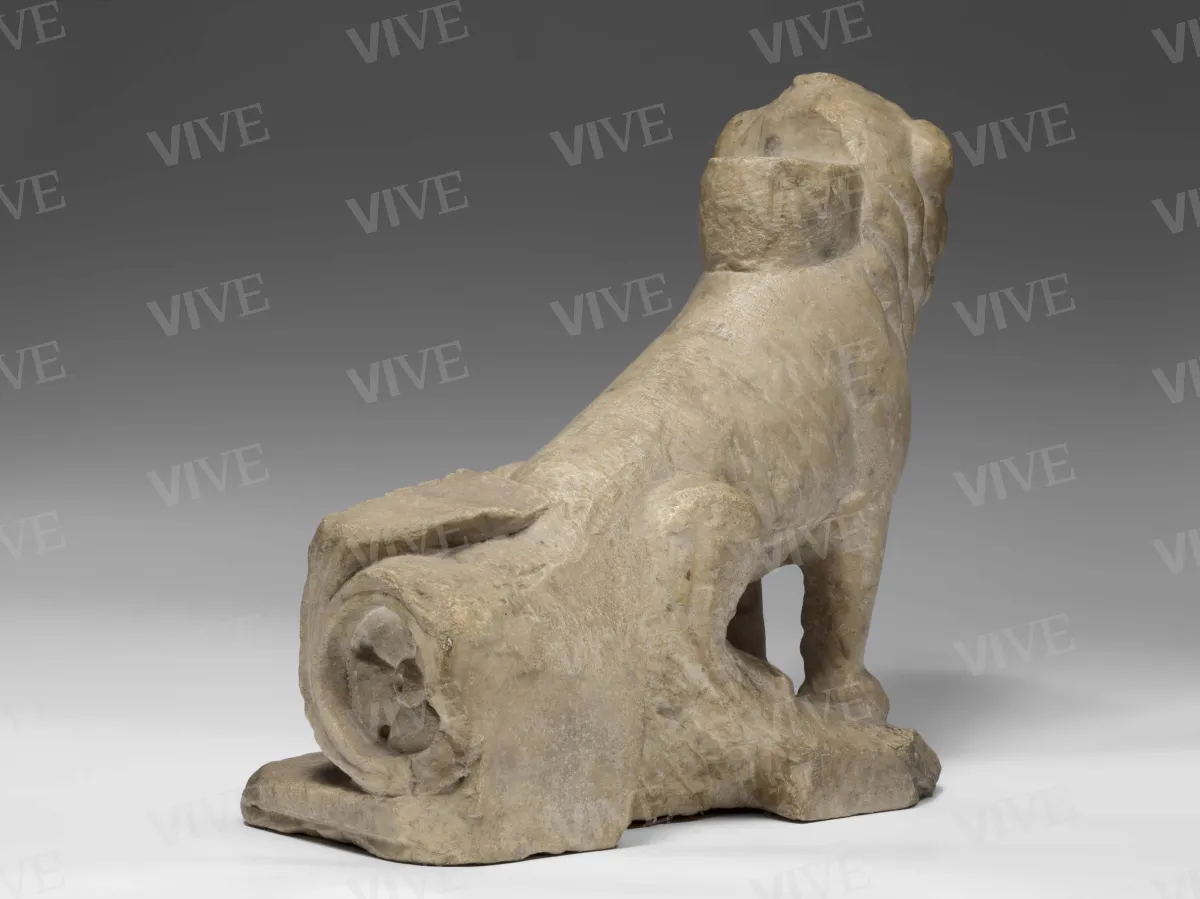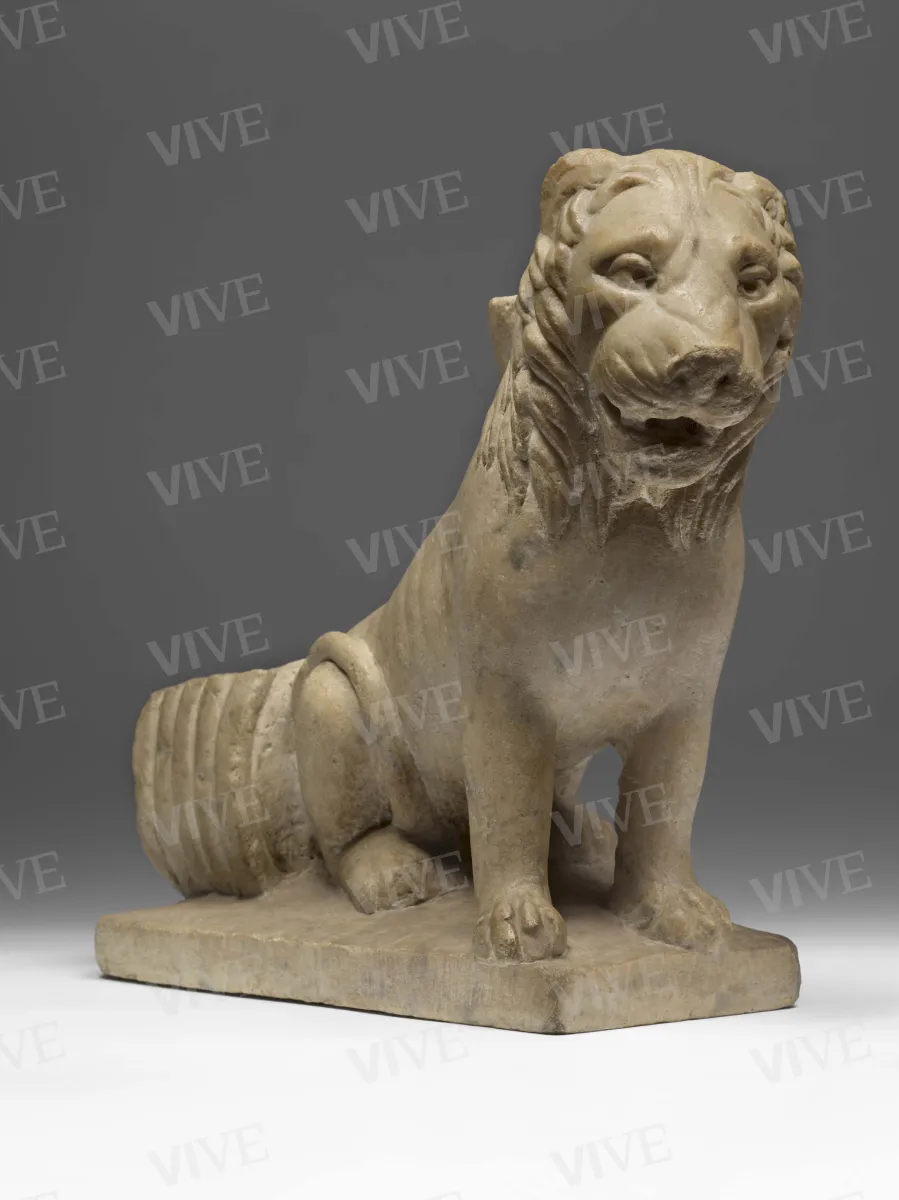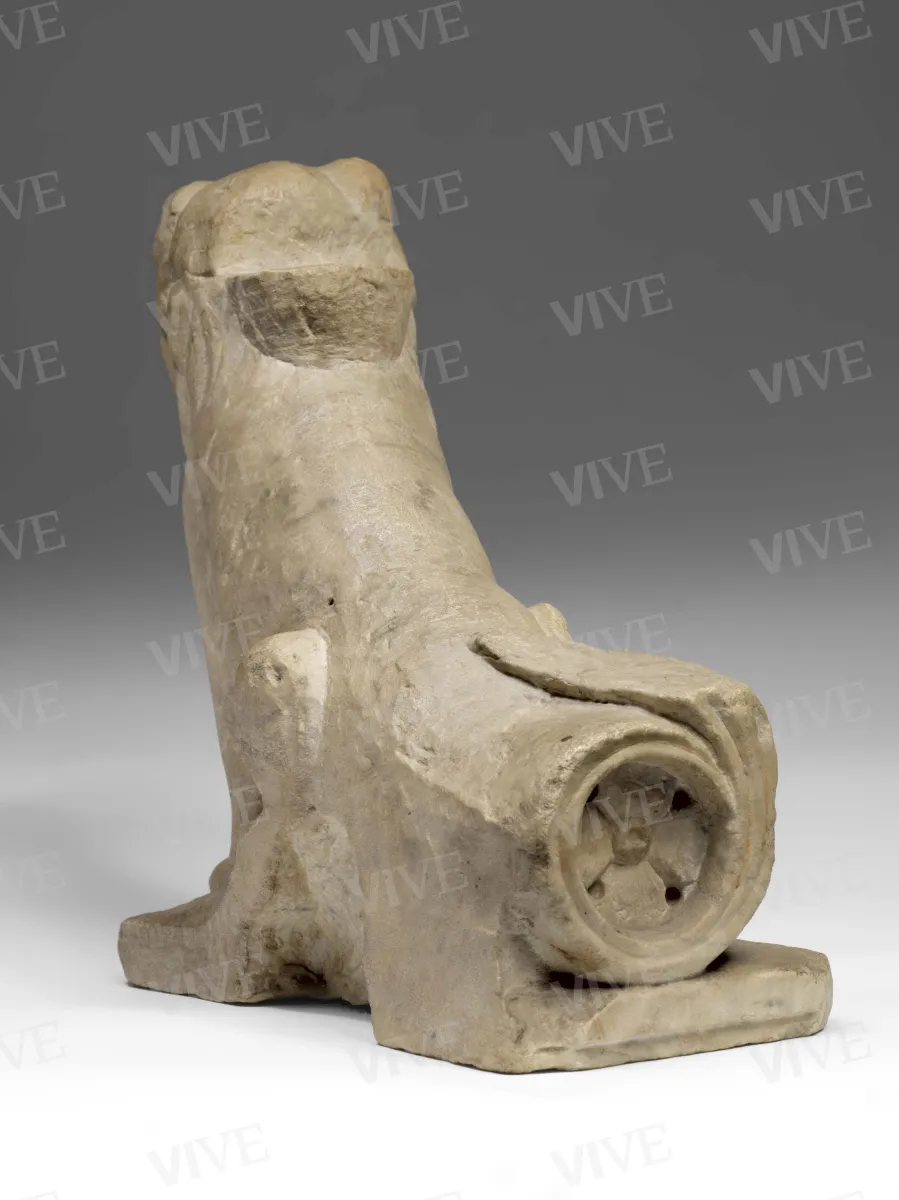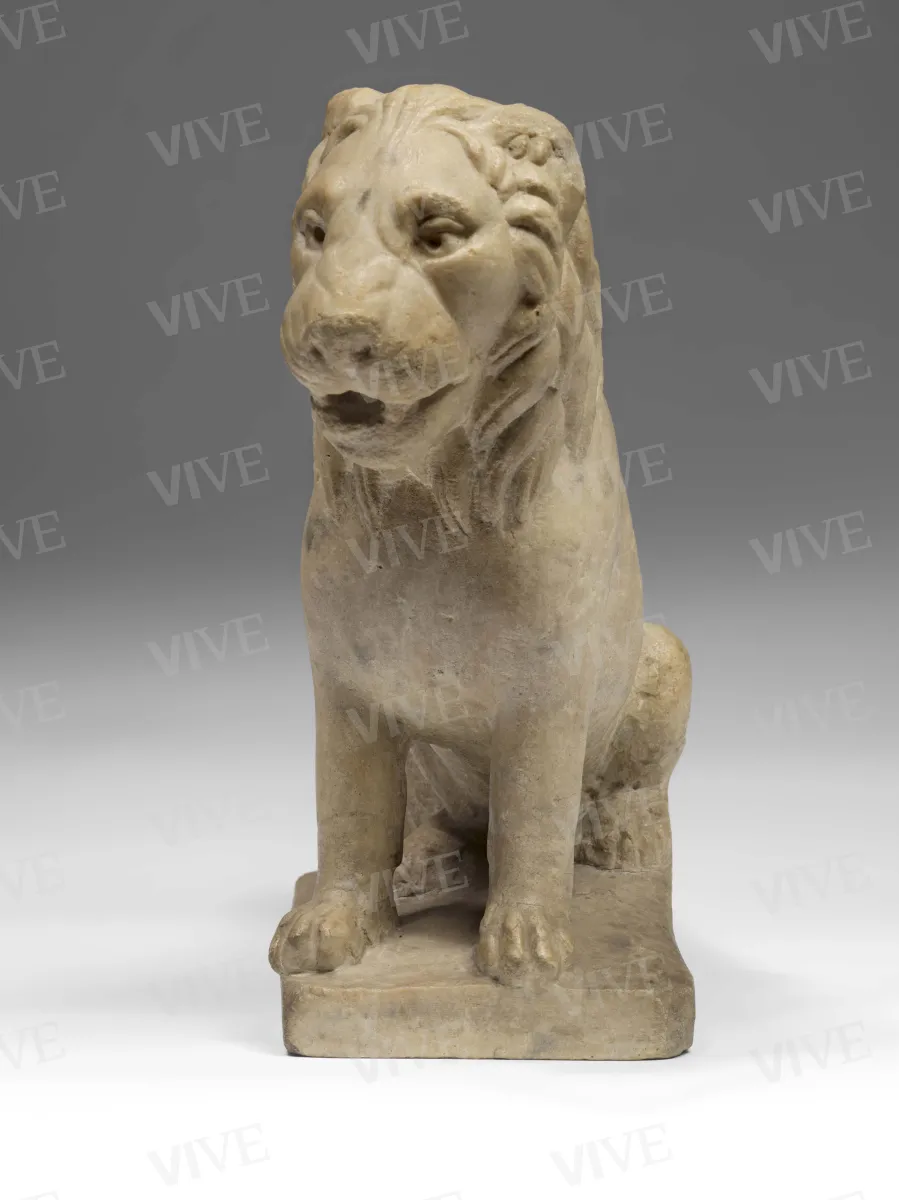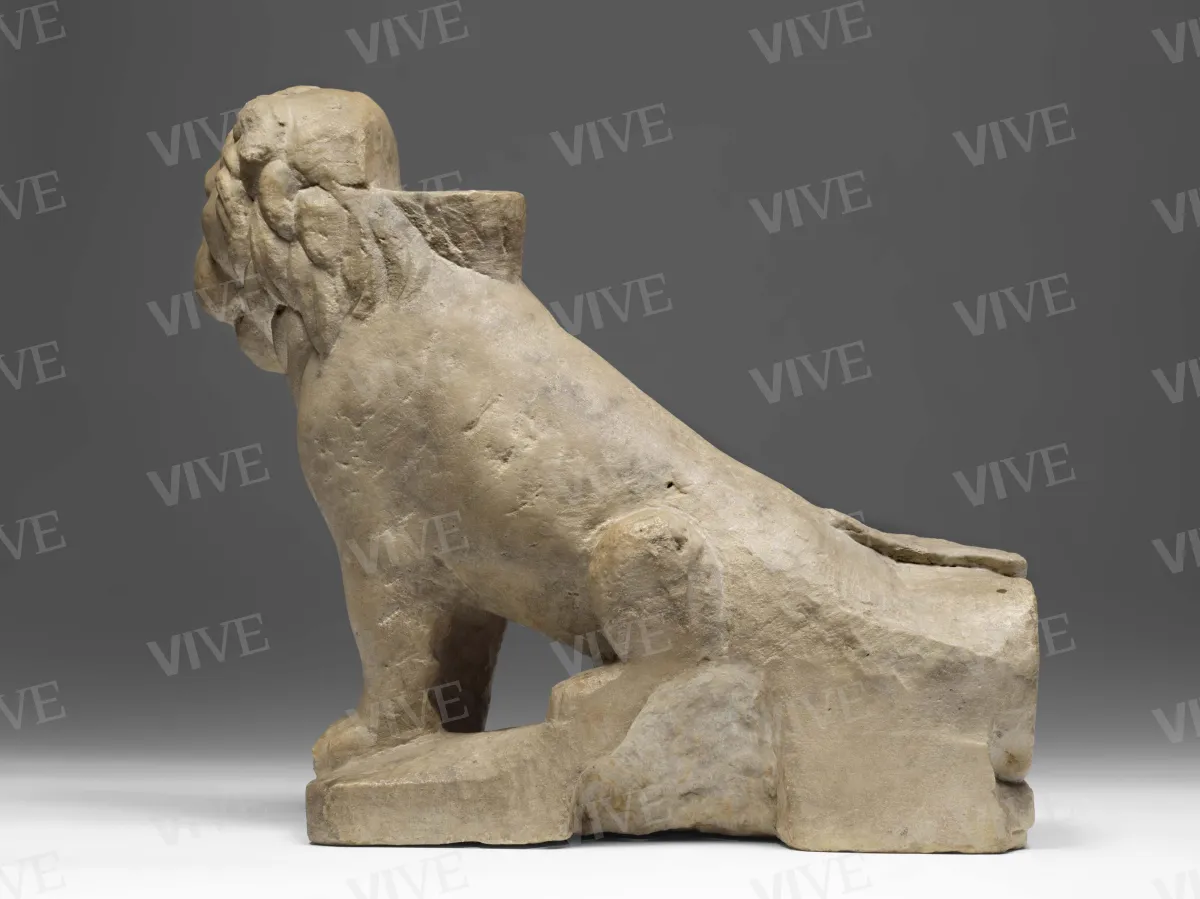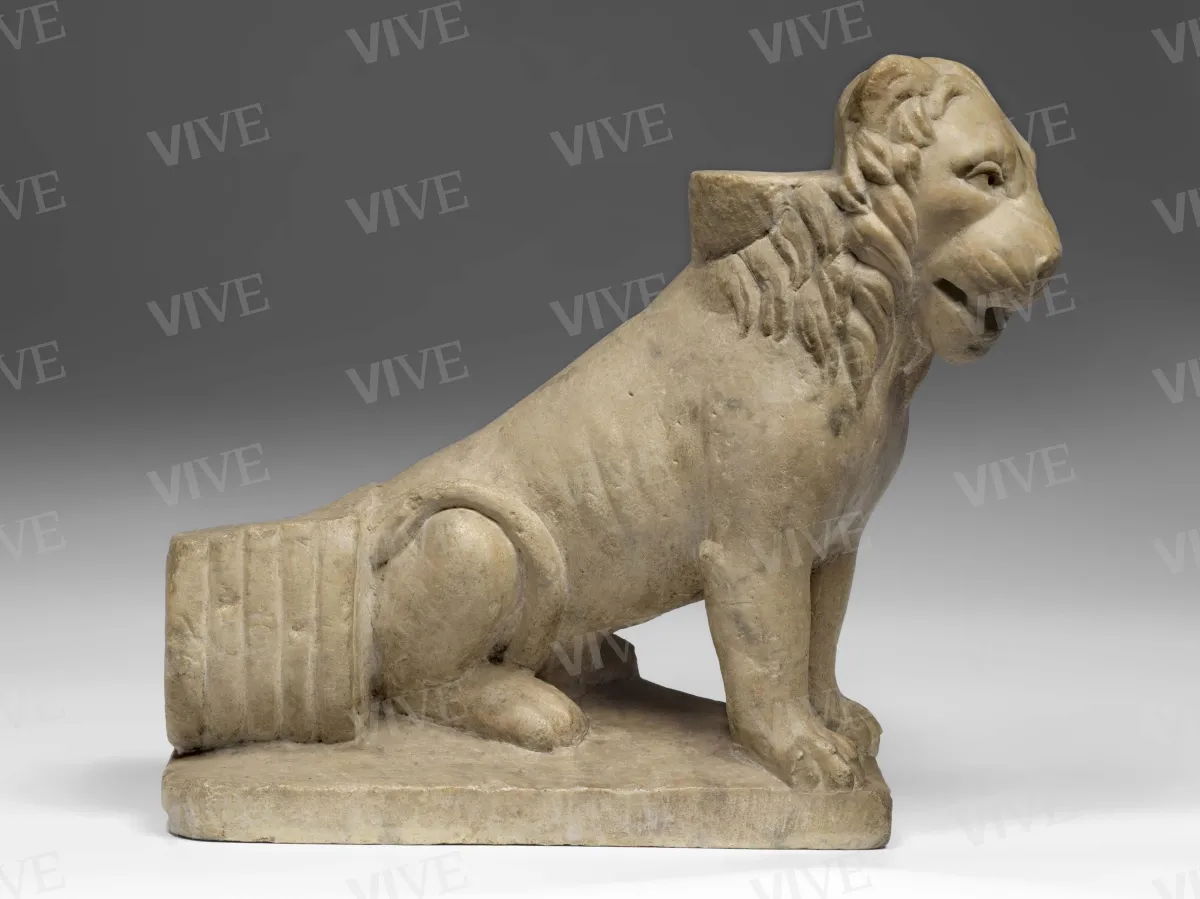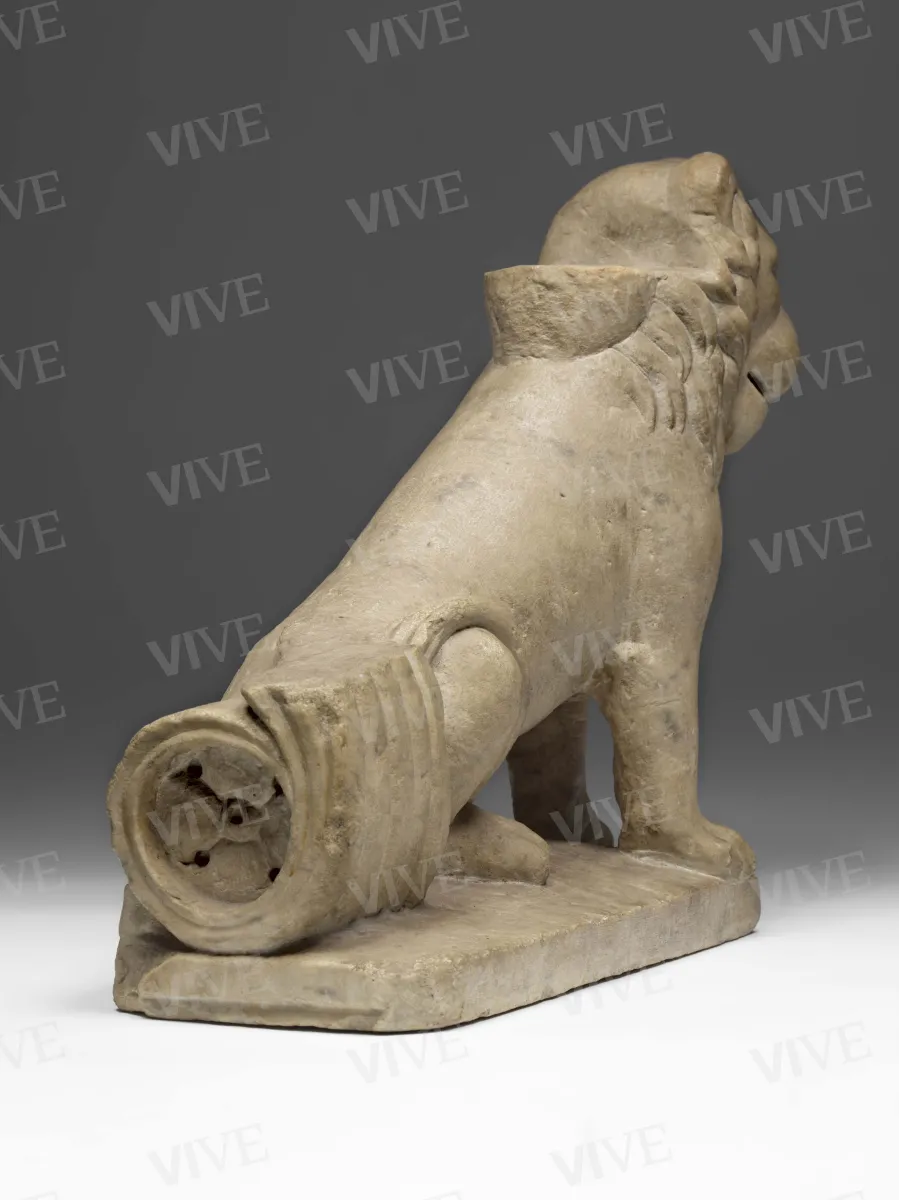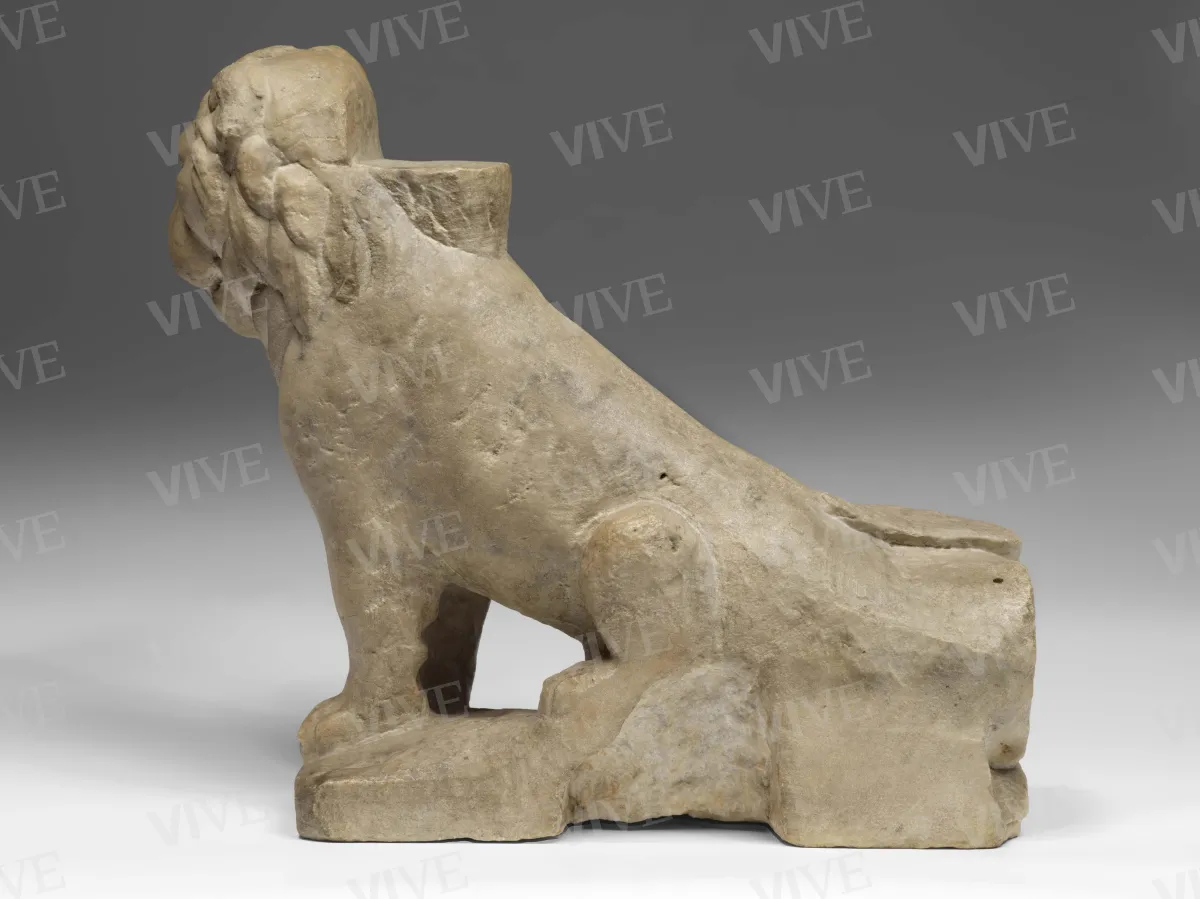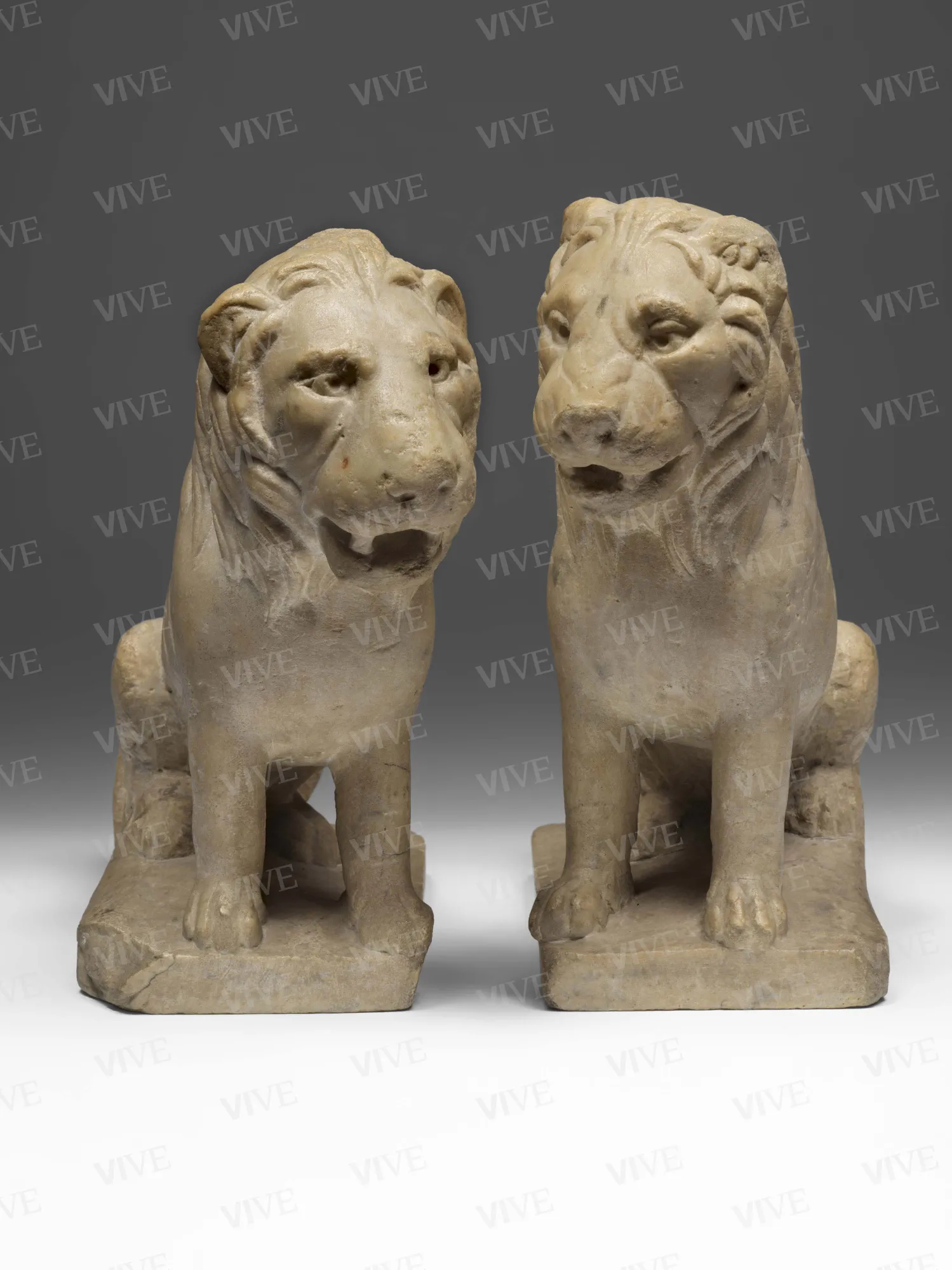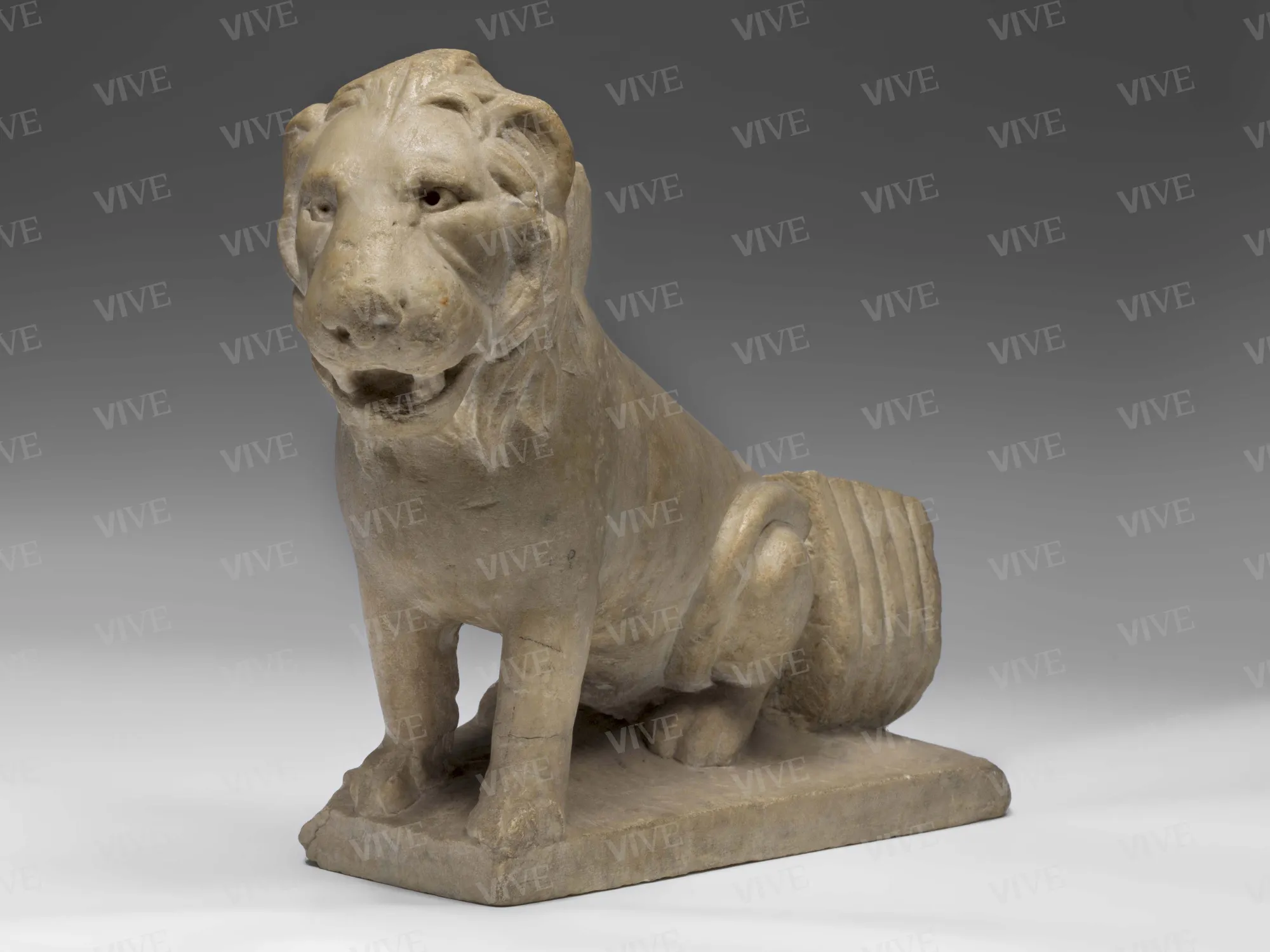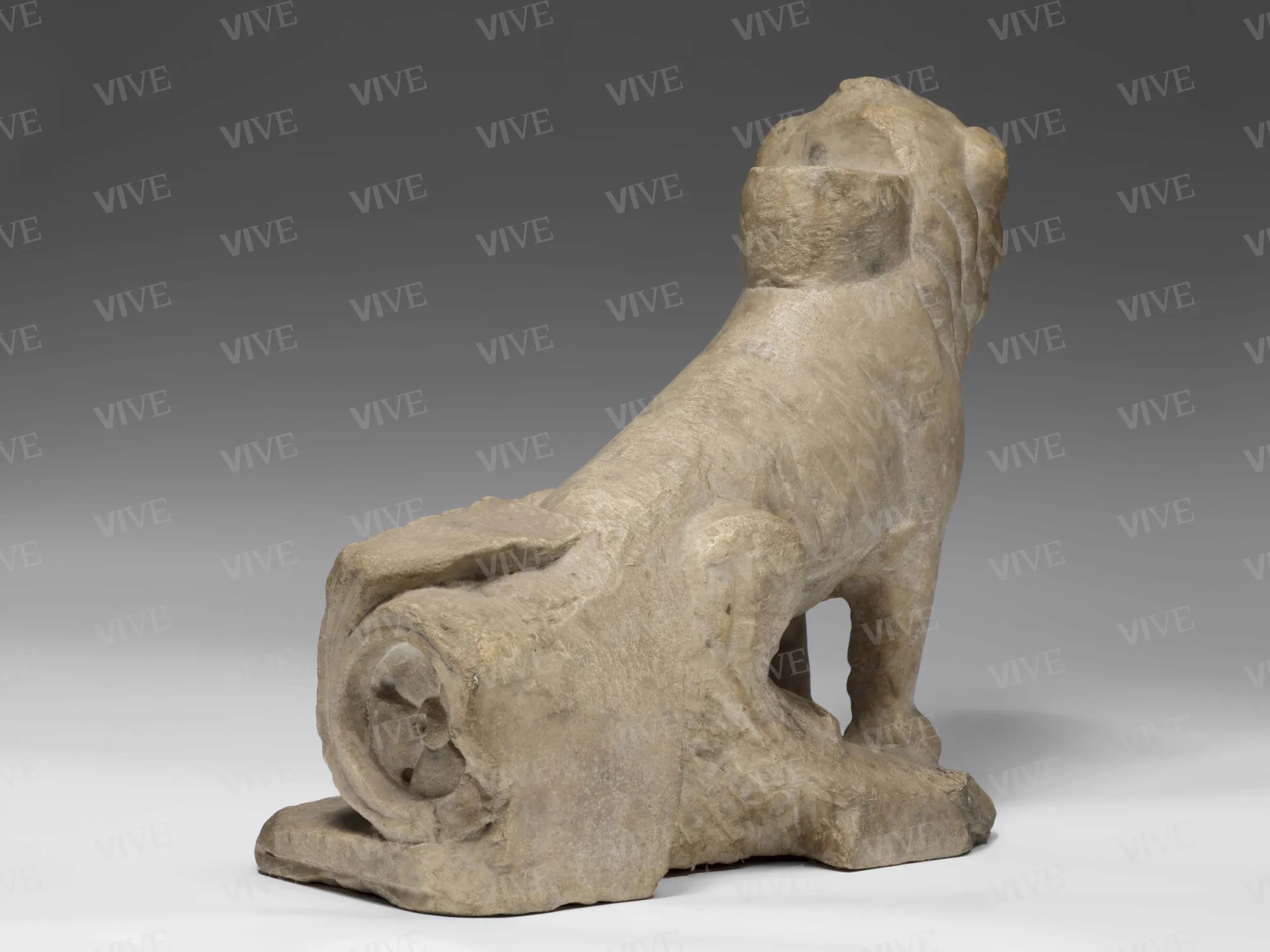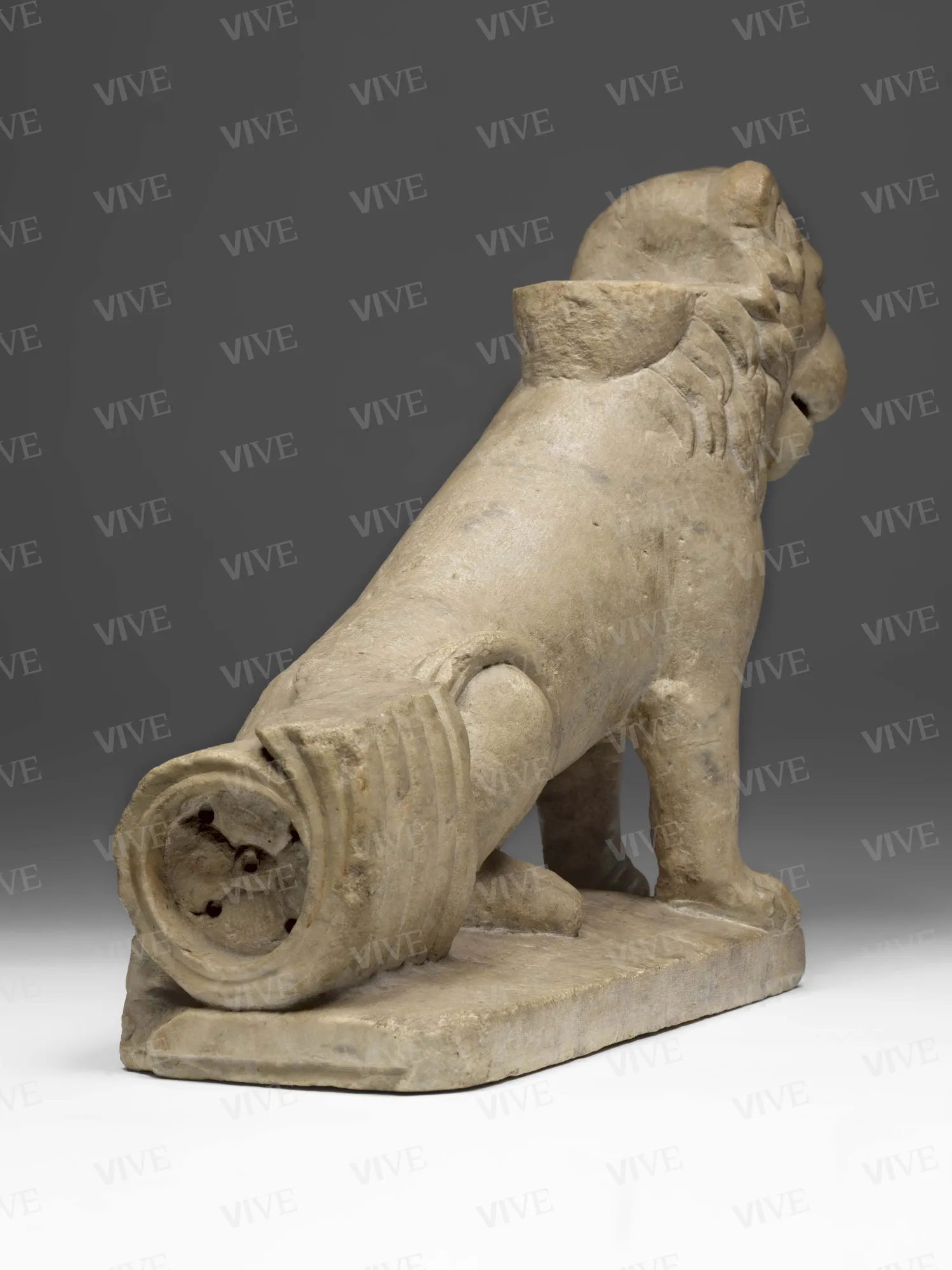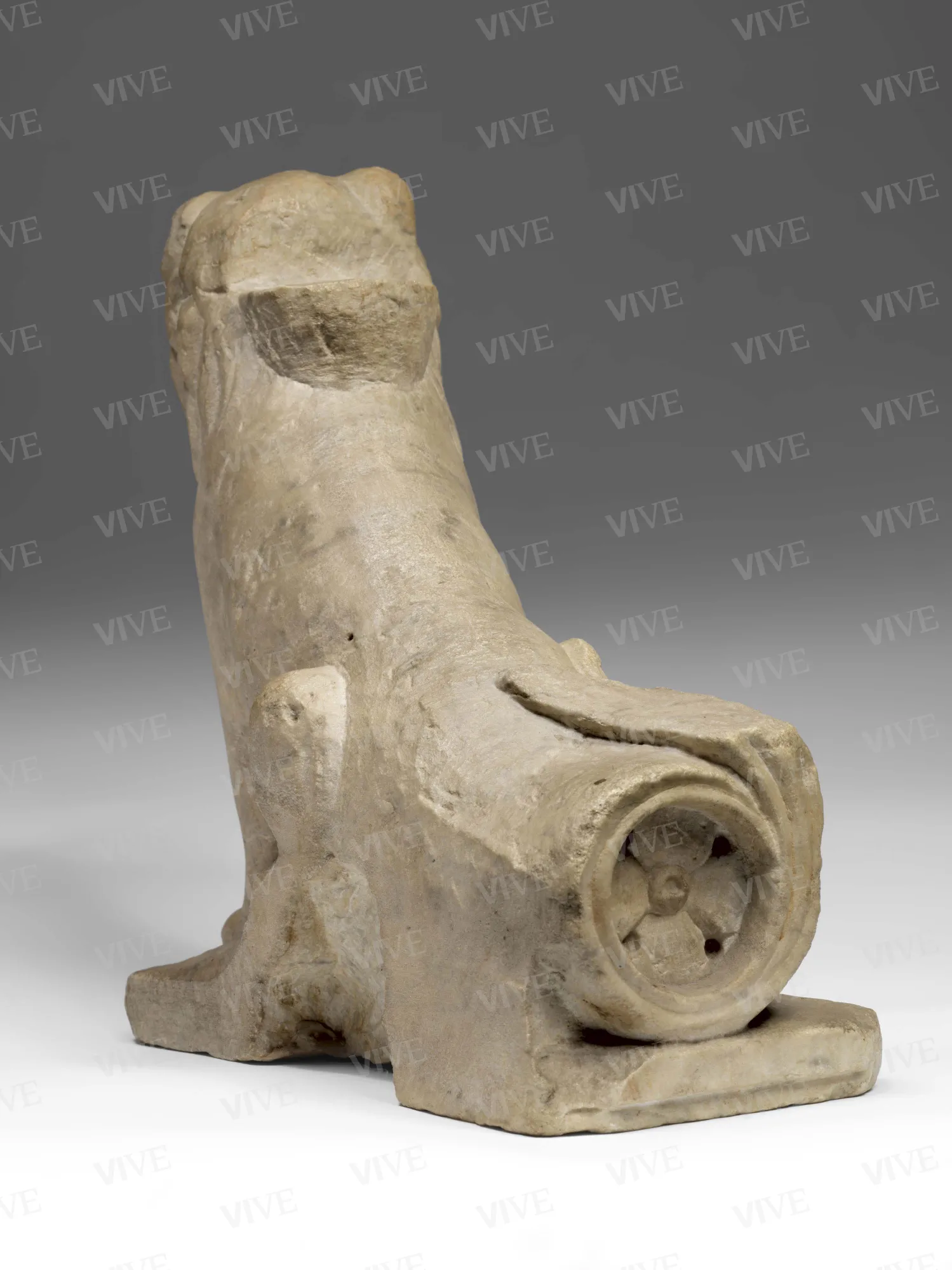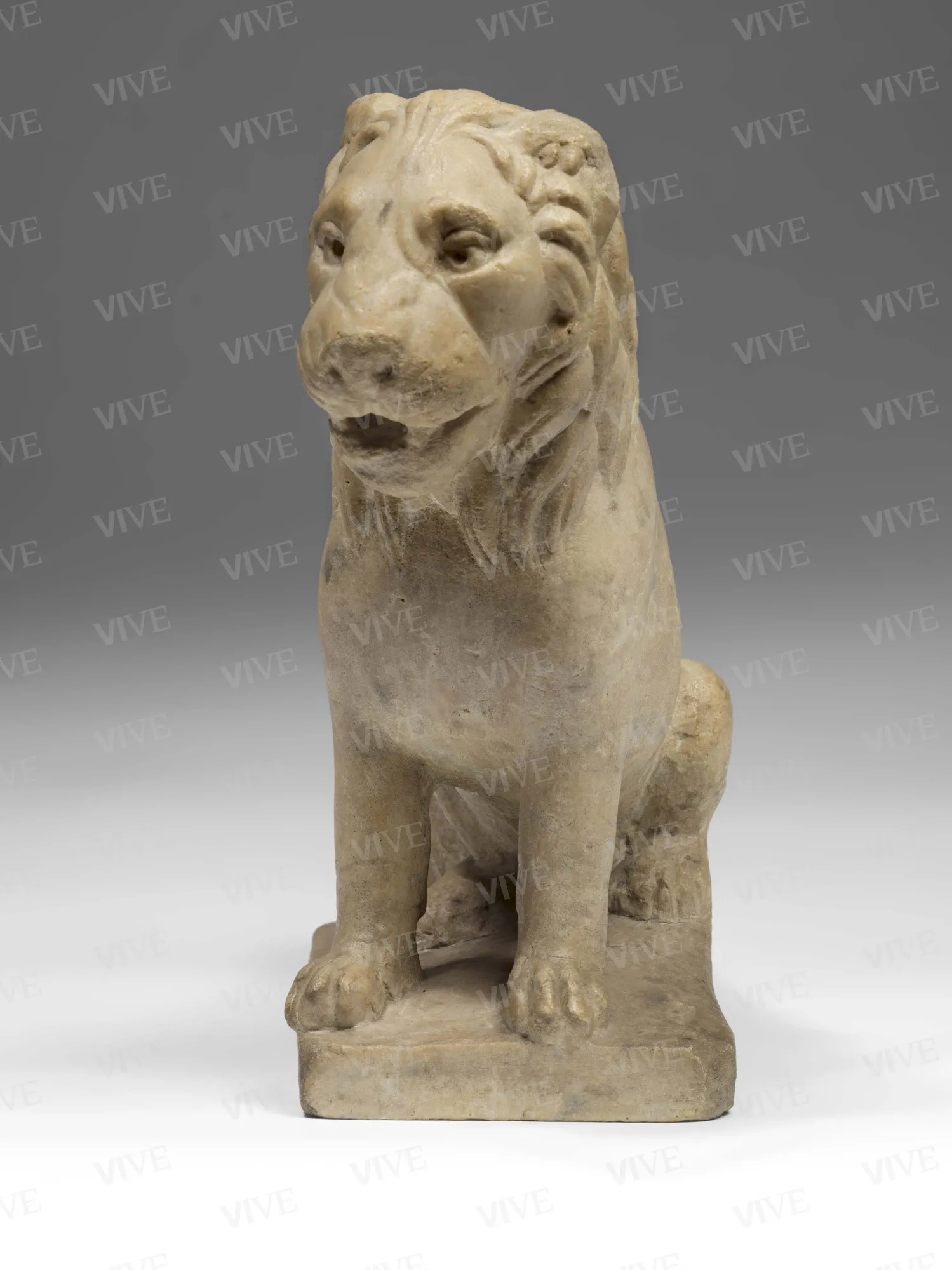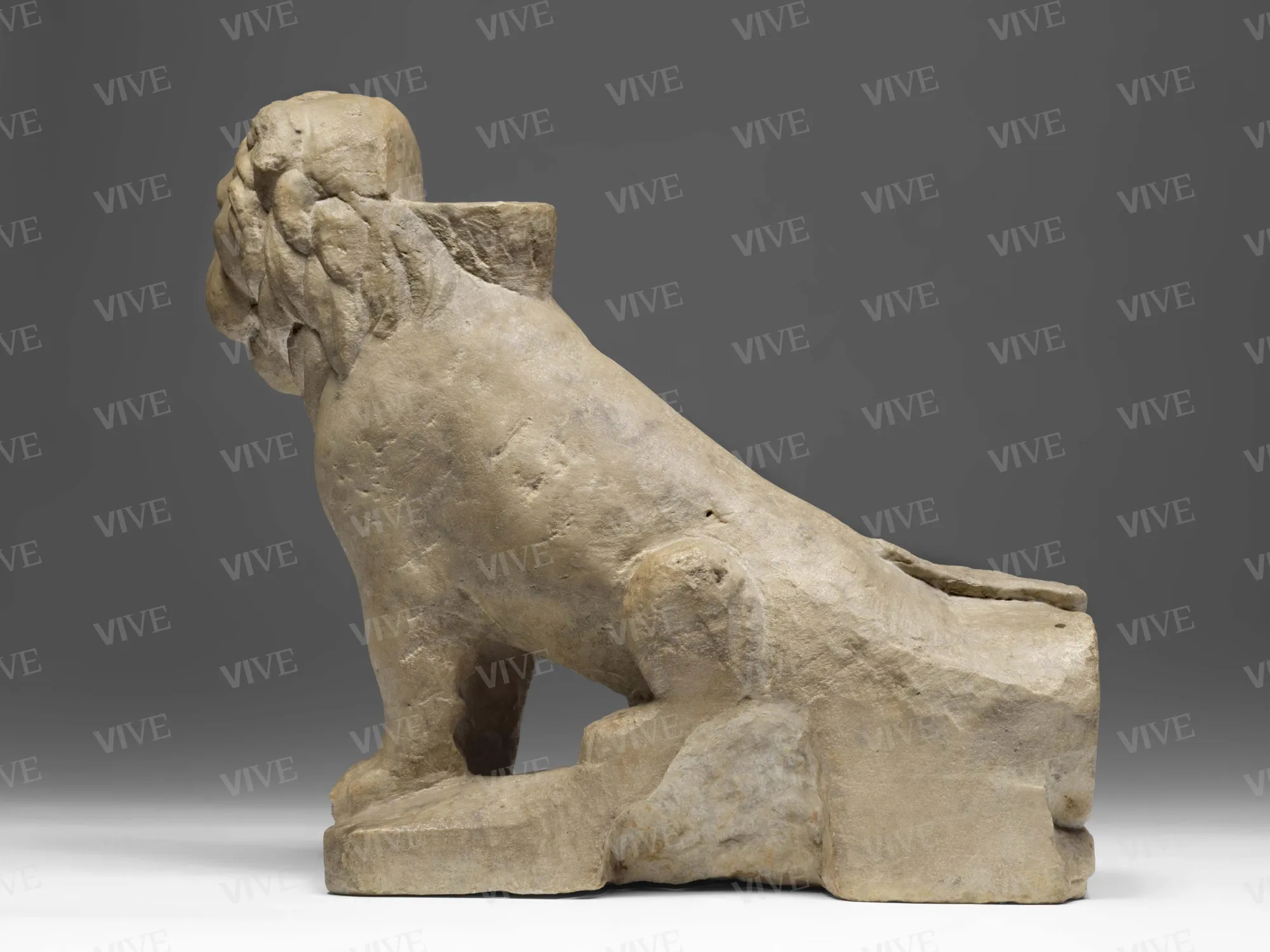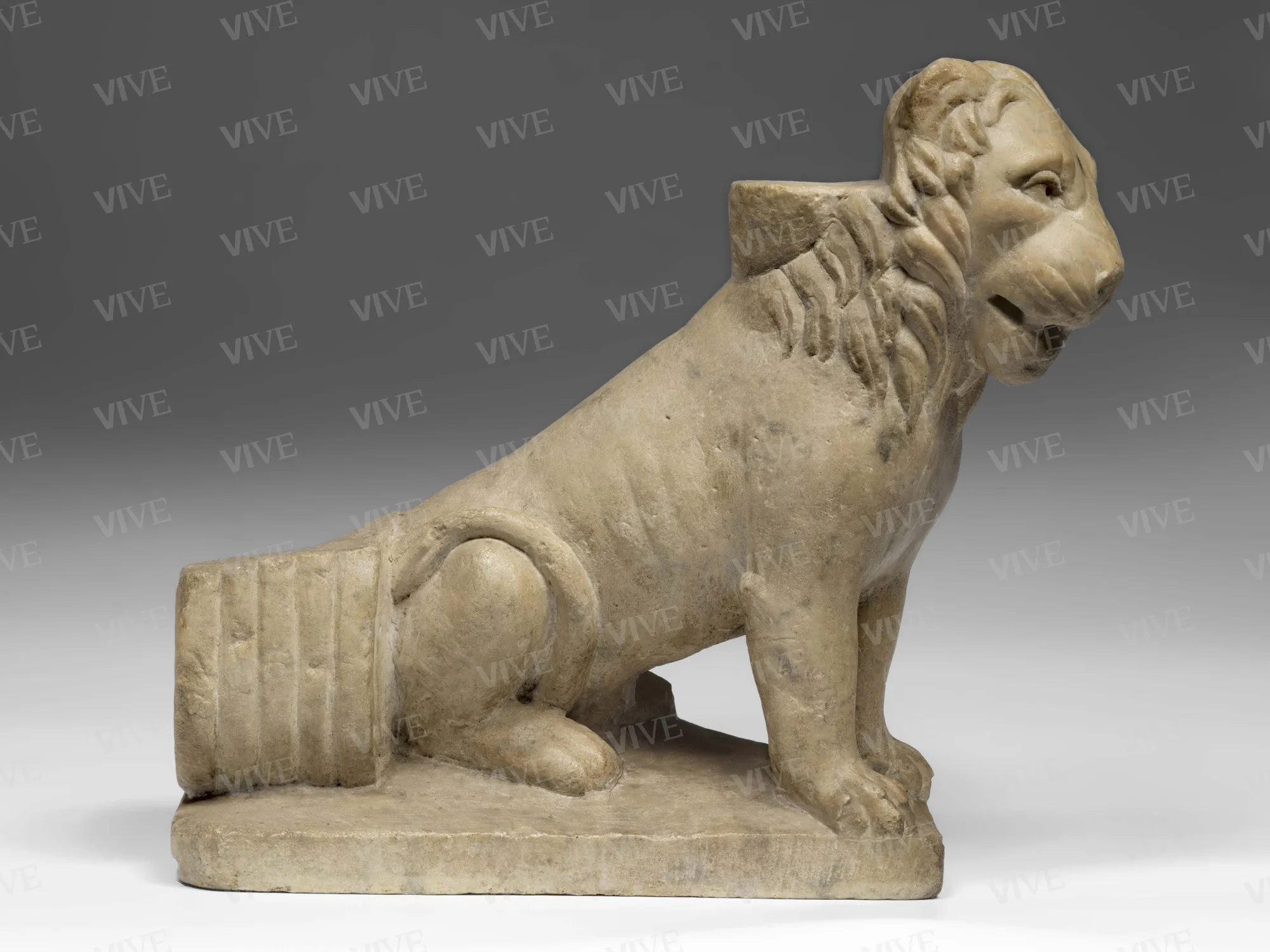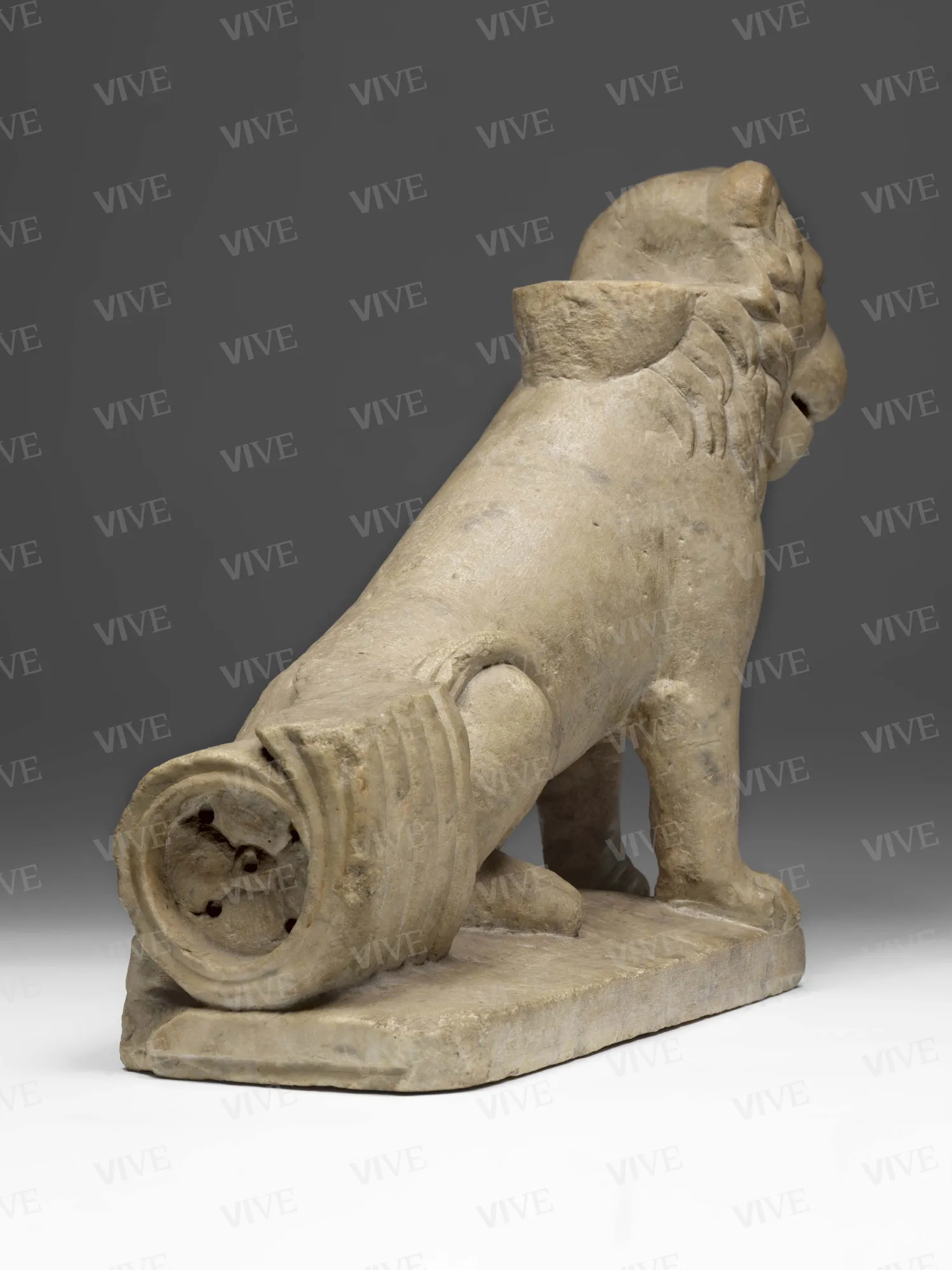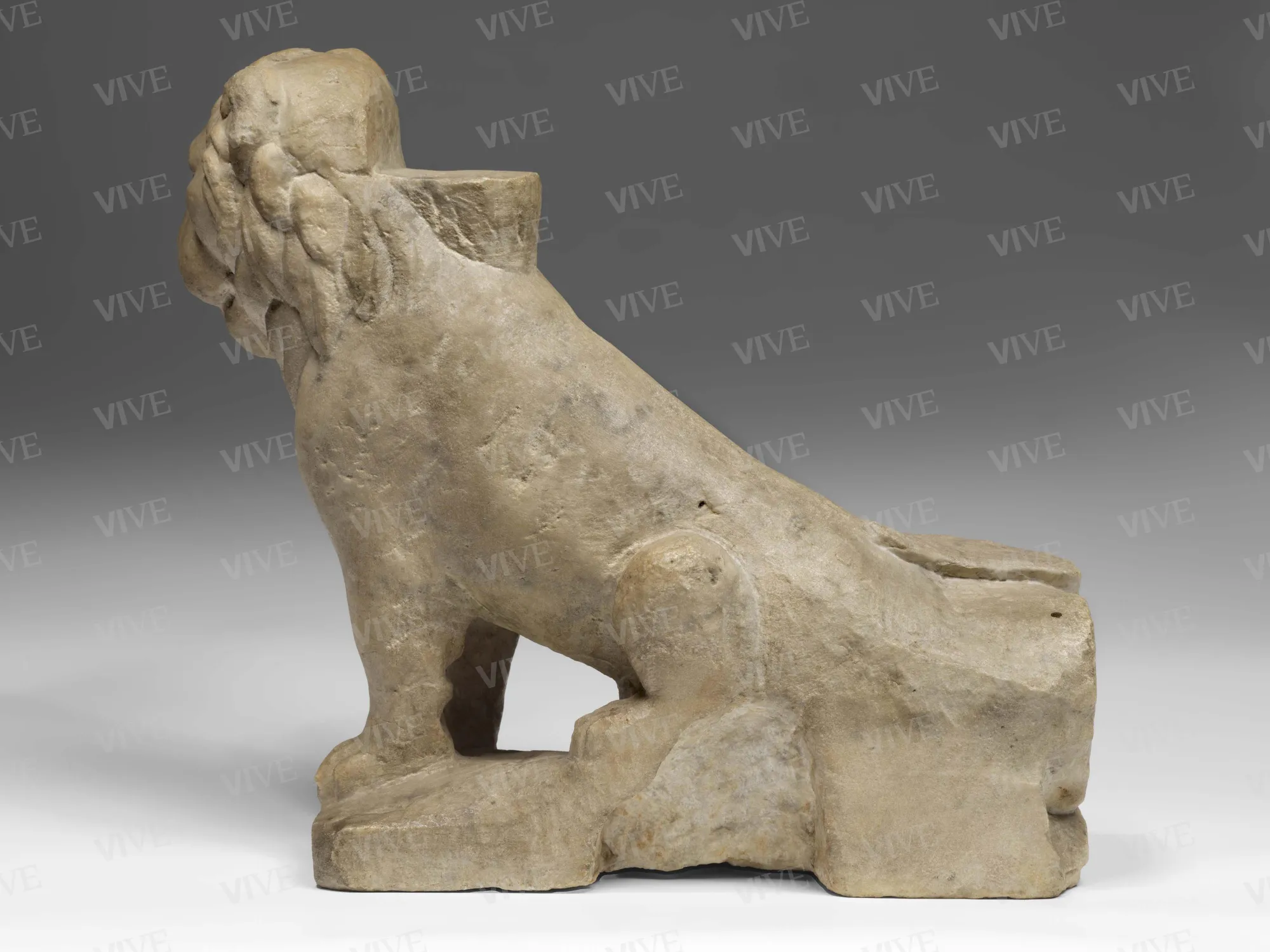Pair of crouching lions
Workshop of Vassalletto Mid-13th century
Pair of small stone lions crouching on a rectangular base. The plinth and another circular structure placed behind the artifact would suggest that the two lion statues held up a burial chest, which was either a basin or a horizontal element.
Pair of small stone lions crouching on a rectangular base. The plinth and another circular structure placed behind the artifact would suggest that the two lion statues held up a burial chest, which was either a basin or a horizontal element.
Details of work
(b) height 32cm, width 13cm.
Catalog entry
The two lions are both crouching on a rectangular plinth; the hind legs are bent while the forelegs are firmly planted on the ground in an upright position.
The two sculptures are very similar in features and size. Both lions, at shoulder height, have a circular relief that served as a support for an element that is no longer extant, which must have been held up by the two lions. Behind the animals is a volute decorated on the outside with four equidistant parallel furrows.
A 1968 photograph from the Gabinetto Fotografico Nazionale (E 6 4513) shows that for the lion inventoried as 10411, the element placed in the back was higher and perfectly in line with the circular support placed on its shoulders.
Reconstructing the form of the two sculptures this way, we can hypothesize that, rather than constituting the base of an Easter candle or an ambo or enclosure (Santangelo 1954, p. 10; Tomei, OA Sheet No. 57/1979), the two lions actually held up a burial chest, a washstand, or some other kind of horizontal element that could be placed over a base.
We are not sure where the sculptures come from. The earliest information regarding their collection is in an undated manuscript by Federico Hermanin, where they are part of a list of stone works in Palazzo Venezia. Despite this annotation, the official inclusion of the two statues in the collections of the Palazzo Venezia museum comes later, on June 30, 1953. Again, Hermanin lists the two marble lions in the volume VII of the museum inventory, giving a generic provenance from demolition works (Latini 1998–1999).
Since demolition work in Piazza Venezia area had been completed well before the 1950s, it is hard to assume that the sculptures came from the same urban context.
Federico Hermanin also provides the first stylistic overview of the two statues, tracing them back to the Cosmati workshop, dating them to the twelfth century.
This dating was revised by Santangelo (1954, p. 10) and later by Casanova (1994, no. 83). According to these two scholars the statues were the production of the Vassalletto family of stone workers, thus dating them to the following century, and more precisely to about 1260, on the basis of a series of comparisons with two lions on the Anagni chair.
A revised dating of these two latter sculptures—which were not originally part of the Anagni chair but probably part of an enclosure—to the 30s or 40s of the same century also allows for a backdating the two Palazzo Venezia lions, which, in the same way, would be more in keeping with the lion reused on the right of the Ferentino Cathedral chair and the one now in the right pew of the church of San Lorenzo fuori le mura in Rome (Gandolfo 1980, p. 361; Gianandrea 2006, pp. 115, 128; Claussen 2010, pp. 426–427).
The finely tuned modeling of the lions’ muscular structure, the naturalistic rendering of their manes arranged in elaborate locks, and the attention to the rendering of proportions and graceful pose makes the works consistent with the sculptural works of the Vassallettos, who, with greater skill than the Cosmati, attempted to reinstate a more classically Roman language.
Valentina Fraticelli
Entry published on 12 February 2025
State of conservation
Fair. There are gaps at the base of the sculptures located above the back and the back itself. There are also visible abrasions.
Provenance
From unspecified demolition works.
Exhibition history
Rome, Palazzo delle Esposizioni, La seta e la sua via, January 23–April 10, 1994;
Zaragoza, La Lonja; Tarragona, Centro Social y Cultural; Seville, Casa de la provincia, Marco Polo y el libro de las maravillas, April 2006–January 2007.
References
Museo di Palazzo Venezia. Catalogo delle sculture, Santangelo Antonino (a cura di), Roma 1954, p. 10;
Tomei Alessandro, schede inv. Soprintendenza per i Beni Artistici e Storici di Roma, ottobre 1979;
Gandolfo Francesco, La cattedra papale in età federiciana, in Romanini Angiola Maria (a cura di), Federico II e l’arte del Duecento italiano, Atti della III settimana di studi di storia dell’arte medievale, (Roma 1979), I, Galatina 1980, pp. 339-366;
Casanova Maria Letizia, in Lucidi Maria Teresa (a cura di), La seta e la sua via, catalogo della mostra (Roma, Palazzo delle Esposizioni, 23 gennaio-10 aprile 1994), Roma 1994, p. 182, n. 83;
Latini Massimo, Il Lapidarium Medievale del Museo Nazionale del Palazzo di Venezia in Roma, tesi di laurea in Storia dell’arte medievale e in Museologia e Storia del collezionismo. Facoltà di Conservazione dei Beni Culturali, Università della Tuscia. a.a. 1998-99;
Gianandrea Manuela, La scena del sacro, l’arredo liturgico nel basso Lazio tra XI e XIV secolo, Roma 2006, pp. 115, 128;
Goméz García Concha (a cura di), Marco Polo y el libro de las maravillas, catalogo della mostra (Saragozza, La Lonja; Tarragona, Centro Social y Cultural; Siviglia, Casa de la provincia, aprile 2006-gennaio 2007), Barcelona 2006, pp. 80-81, n. 41;
Gianandrea Manuela, in Barberini Maria Giulia (a cura di), Tracce di Pietra. La collezione dei marmi di Palazzo Venezia, Roma 2008, pp. 204-205, n. 41;
Claussen Peter Cornelius, Die Kirchen der Stadt Rom im Mittelalter, II.3, G-L, S. Giacomo alla Lungara bis S. Lucia della Tinta, Stüttgart 2010, pp. 426-427 (Corpus Cosmatorum).

